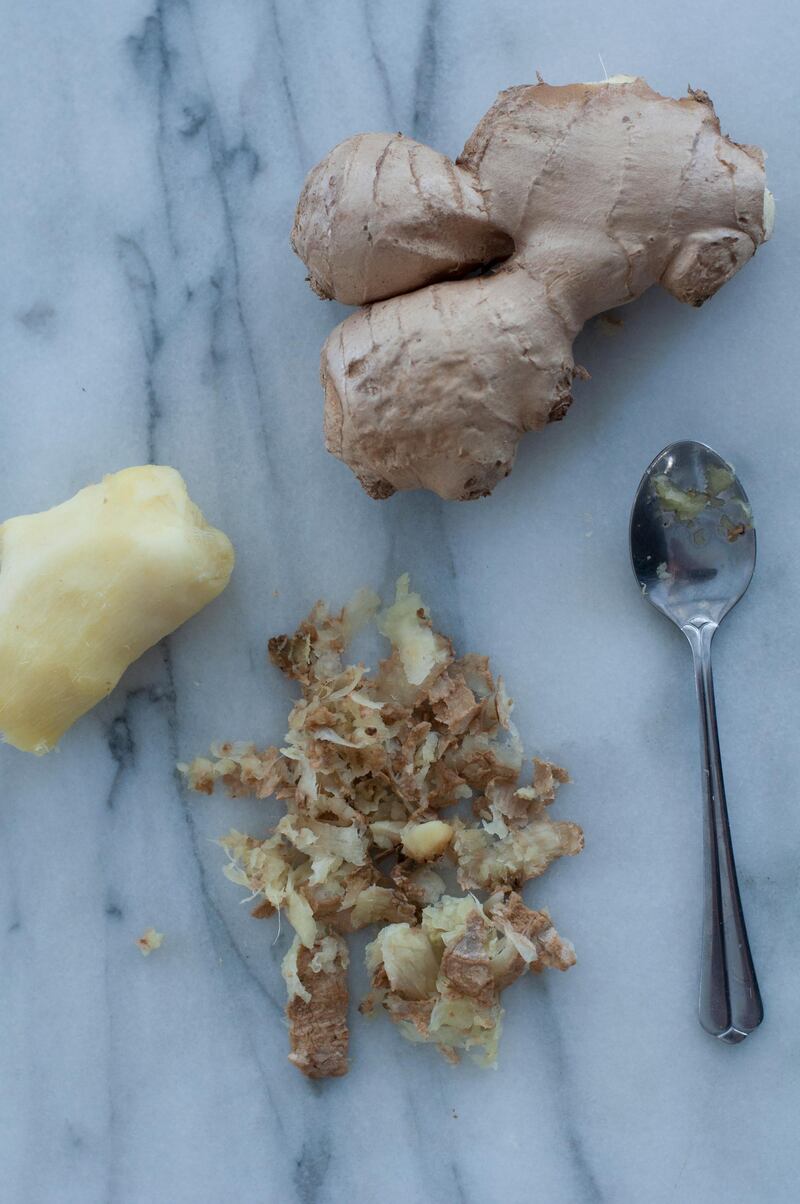From the most efficient way to clean a spice grinder and rescue hardened sugar, to putting dental floss to good use in the kitchen and crushing garlic with ease, read on for our round-up of the cooking tips and food tricks you need to know.
Peel ginger at speed
(See main picture) Fresh ginger is tricky to peel. Its gnarled, knobbly shape makes using a standard vegetable peeler awkward, yet if you go at it with a knife there’s always wastage. Employ the curved edge of a spoon to scrape the thin skin away, though, and not only does the whole process become a lot easier, it also feels therapeutic.
Soften sugar that has gone hard
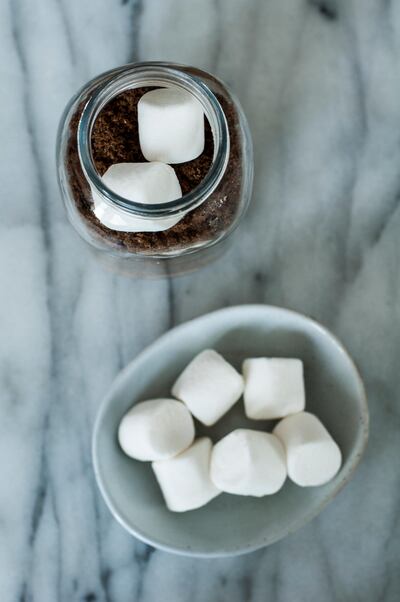
Thanks to fluctuating humidity levels and aggressive air conditioning, brown sugar seems to morph from soft and pliable to fossilised mass particularly quickly over here. When this happens, add a couple of marshmallows to the bag or container, reseal and leave for a day or so; the moisture from the marshmallows will rehydrate the sugar a treat.
A no-space kitchen solution
If your kitchen is on the cramped side, we feel your pain. With no room for propping open a cookbook or food magazine, following a recipe becomes difficult. Enter the coat hanger solution. Use a wooden coat hanger with trouser clips to hold up lighter cookbooks, magazines and newspapers with recipes, and then suspend the hanger from a cabinet doorknob. Not only do you economise on space, but the recipe is also at eye level for easy reading and doesn’t get splattered during the food preparation process either.
Clean silver the natural way
Instead of attacking tarnished silverware and jewellery with acrid-smelling polish, try baking soda and foil instead. Line a bowl or dish with foil (shiny side facing out), fill with recently boiled water and mix in a couple of teaspoons of baking powder. Add the silver, making sure that each piece comes into contact with the foil but that the pieces don’t touch each other. Leave for a minute or so, remove with tongs and revel in the shiny results.
Shake your way to a better salad dressing
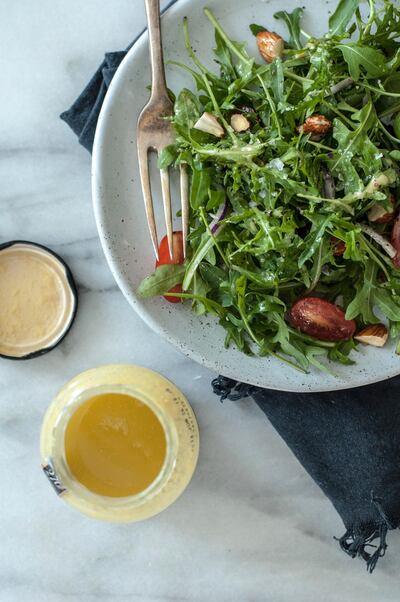
Every cook should have a basic vinaigrette recipe in his or her repertoire (ours is three-parts oil, one-part white grape vinegar, with a touch of honey and Dijon mustard, and plenty of salt and pepper). The secret to a silky-smooth, well-blended dressing lies in making sure the oil is fully emulsified with the other ingredients. While this can be achieved with careful whisking, it is quicker and easier to pop everything in a jam jar, screw the lid on and then shake it with abandon.
The fastest way to soft, spreadable butter
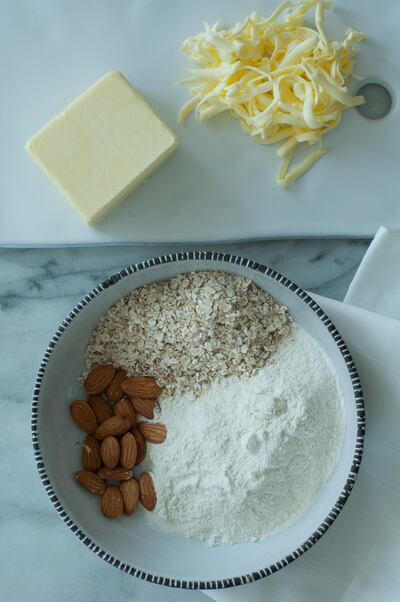
Attempting to spread rock-solid butter over hot toast and ripping holes in the bread while doing so is the kind of early morning stress that we can all do without. So too is realising – apron on, wooden spoon in hand – that a recipe calls for softened butter, when yours is still in the fridge. Use a cheese grater to instantly shred a block into beautifully soft curls and you never need to experience that specific kind of despair again.
Purchase a Microplane
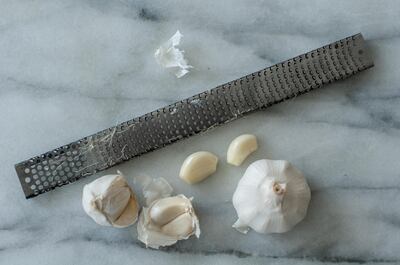
Let’s cut to the chase: Microplanes are small, inexpensive, easy-to-use and will make you more efficient in the kitchen. Essentially a long grater with sharp, fine holes, a Microplane minces garlic in mere moments, turns a bar of chocolate into delicate shavings, zests all manner of citrus fruits, finely grates Parmesan and reduces cinnamon sticks and nutmeg to recipe-friendly powder.
Slice cheese like the professionals
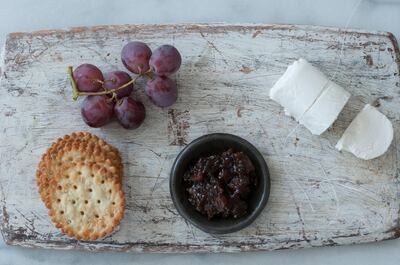
When you need to cut soft or crumbly cheese cleanly and neatly, it’s time to bring out the dental floss. Thread a length of floss underneath the cheese, holding one end in each hand and then cross the two over each other. Pull the floss taut and it will glide through the cheese smoothly. This emulates the work of a cheese wire and creates perfect slices, without leaving an uneven pile of crumbly chunks.
Clean your spice grinder
Grind your own spices rather than using pre-ground powder, and you will taste and smell the difference. But – and this but could be a deal-breaker – grinders are a real faff to clean. This is even more of an issue if you use the same utensil for everything from coffee beans to cumin seeds. The solution? After using, fill the grinder with rice and blitz to a fine dust. The rice will dislodge any bits and pieces that have been left behind and also absorb residual flavours and aromas, meaning no more curry-scented coffee.
Beat the eggshell blues
You may not have known real frustration until you have spent 20 minutes chasing a tiny bit of eggshell around a cake bowl. Give yourself a fighting chance by cracking the eggs into a small bowl one by one, rather than directly into the batter / scrambled egg pan/cookie mix. That way you only end up fishing eggshell from the egg base, rather than having to navigate other ingredients. The best tool for scooping up larger pieces of shell is the cracked half of another egg – the jagged edge cuts through the viscous whites really well. As for those pesky shards that are barely perceptible to the eye, wet your fingertips with water and the shell will be drawn towards them in a magnet-like fashion.
Get more from canned chickpea water
The next time you drain a can of chickpeas, instead of throwing the water away, keep it. When whipped for a few minutes the murky, rather unappealing-looking liquid morphs into a foamy, frothy mass that can be used instead of egg whites to make vegan meringues, macarons, mousses and more.
Guide to good crumbing
When a recipe calls for dredging ingredients in flour, followed by beaten egg and breadcrumbs, observe a few simple rules. First, always season the flour with salt and pepper. Next, set up a crumbing station: lay out three separate bowls filled with the flour, egg and breadcrumbs, in the order you need them – in an assembly-line fashion. Designate a dry hand and a wet hand and use the dry hand to dip the food in the flour and breadcrumbs and the wet hand to coat it in the egg and transfer it to the breadcrumbs. This means your fingers won’t become sticky and need washing between each addition, and your kitchen will remain clean, too. Finally, lay the crumbed ingredient on a wire rack with a baking tray underneath to catch any drips and to stop it from sticking.
The key to perfectly sized cupcakes
If your cupcake cases always end up filled to different heights and your cookies also vary in size, then rather than using a spoon to transfer the mix from bowl to baking tin, try a spring-loaded ice-cream scoop instead. Not only is this approach faster and cleaner, but your bakes will look wonderfully uniform as well. While we’re on the subject, if you fancy being one of those people who can conjure up warm-from-the-oven cookies on demand, then chill portioned balls of raw batter in the fridge for 30 minutes, store them in a clear plastic bag and then freeze. When the urge for cookies strikes you can bake as many as you need to, straight from frozen.
Measure sticky ingredients with finesse
Sticky ingredients such as honey and golden syrup that cling stubbornly to the spoon or measuring cup, and mean you’re never entirely sure whether you’ve added the correct amount specified in the recipe, can spell disaster when baking. But mist the spoon with non-stick cooking spray or dip it briefly in oil or hot water first and you will find that the ingredients slide straight off.
Chill drinks the fast way
When you’re out of ice and need to chill a beverage pronto, the fastest way to do so is by wrapping the bottle or can in cold-water-soaked paper towels and then pop the beverage in the freezer. Due to the low temperature, the water will rapidly evaporate and this will result in the contents cooling down in record time, ready for you or your guests.
_________________
Read more:
[ My key ingredient ... tomatoes ]
[ World without colour: would you enjoy an all-black-and-white meal? ]
[ Shake Shack cookbook: does the extra effort produce the desired results? ]
_________________
